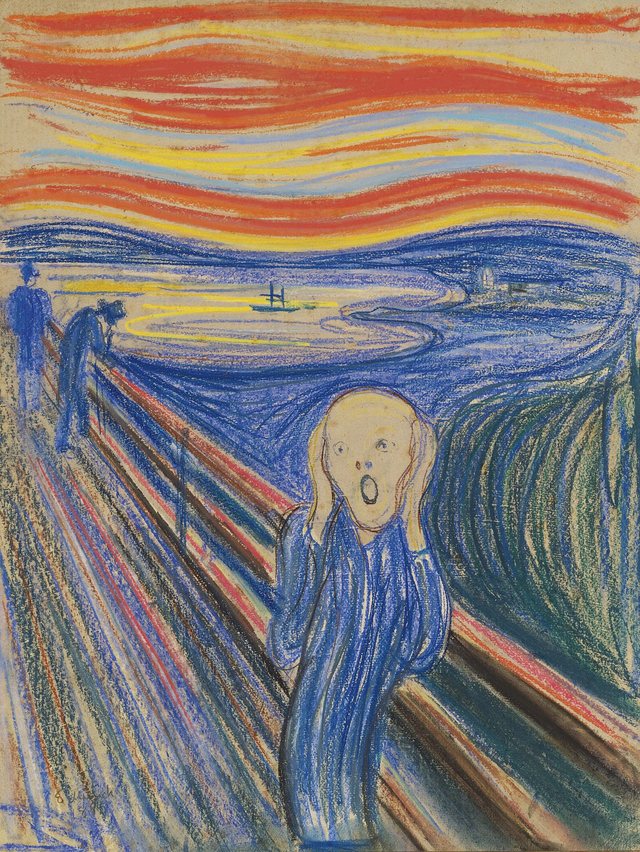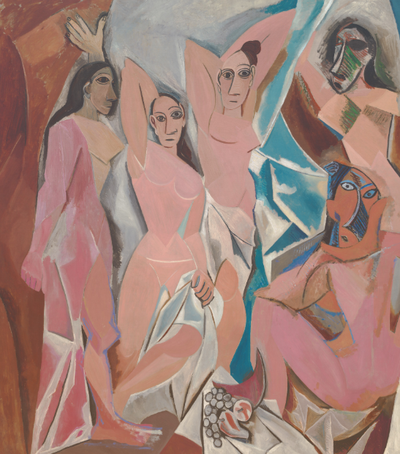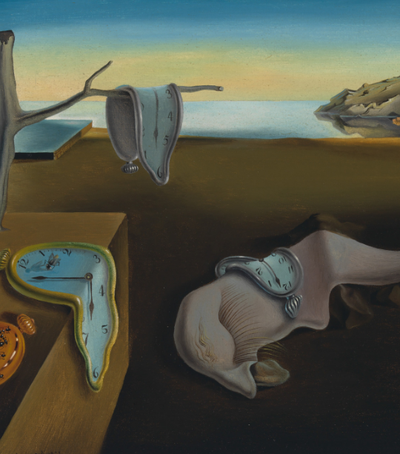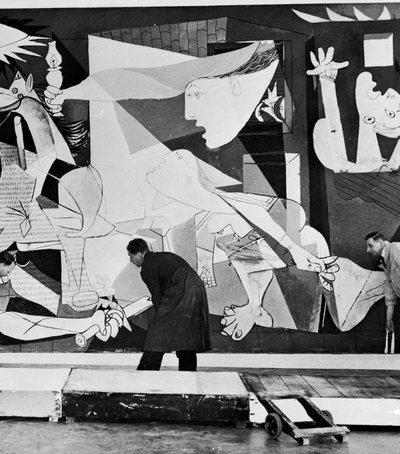
The famous painting The Scream, created by Norwegian artist Edvard Munch in 1893, is one of the most famous and disturbing works in the history of art. It has become a universal symbol of anxiety, existential fear and the spiritual crisis of modern man, transcending the boundaries of art to become part of global culture.
Key points of the work:
Figure and visual composition:
At the center of the painting is a figure with a face contorted in horror, her hands on her face and her mouth open in a silent scream.
Behind her lies a fiery red and orange sky, depicting a dramatic and emotionally charged atmosphere.
The distorted drawing, the undulating lines and the aggressive colors make the scene seem like an explosion of inner anguish into the outside world.
Artist's personal experience:
Munch wrote in his diary that he was walking along a bridge when he was suddenly overcome by a feeling of anxiety and gloom, and the sky above him seemed to be on fire. This moment became the direct inspiration for the work.
He described the experience as a “cry of nature through me,” giving the work’s title a metaphysical dimension.
Symbolism and message:
1. The Scream represents the individual's emotional crisis in the face of modernity, loneliness, and existential anxiety.
2. The unidentifiable figure could be anyone – it has no gender, nationality or time – it is an icon of the human spirit in turmoil.
3. The painting challenges the tranquility of the traditional landscape and brings for the first time inner emotion as the center of the visual experience.
Expressionist style:
The Scream is one of the founding works of expressionism, an artistic movement that attempts to reflect internal feelings rather than external reality.
The use of colors inappropriate to reality, distorted lines, and image deformation create a visual language that speaks to emotion, not logic.
Cultural and artistic influence:
The work has been reproduced, analyzed, and referenced in hundreds of contexts: from pop culture to modern psychology.
It has become an icon of collective anxiety, often used to describe feelings related to personal, social, or global crises.
Today, The Scream exists in several different versions, including drawings and lithographs, and one of them is on display at the National Gallery of Norway in Oslo.
“The Scream” is more than a painting – it is a scream through time, reminding us that fragility, uncertainty, and anxiety are a common part of being human. Even more than a century after its creation, this work by Munch continues to be the most sensitive and powerful reflection of the troubled soul of modern man.





